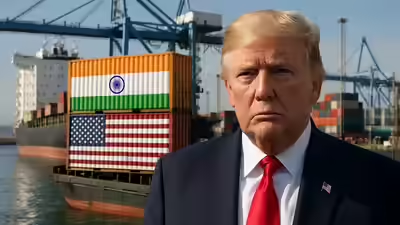Foreign
U.S. threatens high tariffs on Indian pharmaceuticals

U.S. President, Donald Trump has threatened to impose a significant tariff increase on imported pharmaceuticals, potentially reaching 250 per cent, with the goal of boosting domestic drug manufacturing.
President Trump said in a CNBC interview that the tariffs would start at a lower level but escalate over time, reaching 150 per cent within one to one-and-a-half years and eventually 250 per cent.
Trump aims to reduce reliance on foreign pharmaceuticals and promote domestic production.
The initial tariff rate on pharmaceuticals hasn’t been specified, but it will increase substantially over time.
Trump also announced his intention to unveil fresh duties on foreign semiconductors, citing national security concerns..
Trump is expecting to raise U.S. tariffs on Indian imports significantly due to India’s purchases of Russian oil.
Industry leaders warned that such tariffs could drive up drug prices, stifle investment in research and development, and disrupt supply chains.
They said that the potential consequences include increased healthcare costs, reduced access to affordable medicines, and trade retaliation.
“We’ll be putting (an) initially small tariff on pharmaceuticals, but in one year, one-and-a-half years, maximum, it’s going to go to 150 percent,” Trump said in an interview on CNBC.
“And then it’s going to go to 250 percent because we want pharmaceuticals made in our country,” he added.
In the same interview, Trump said he expected to raise the U.S. tariff on Indian imports “very substantially over the next 24 hours” due to the country’s purchases of Russian oil.
While Trump has taken aim at products from different countries with varying tariff rates after imposing a 10-per cent levy on almost all trading partners in April, these have excluded certain products he planned to target separately.
After earlier embarking on probes on imported semiconductors and pharmaceuticals, the Trump administration has signaled plans to wrap up these studies which could lead to new tariffs.
Already, Trump has slapped steep tariffs of 50 percent on imported steel and aluminum, and also rolled out a separate but lower duty on autos and parts.


